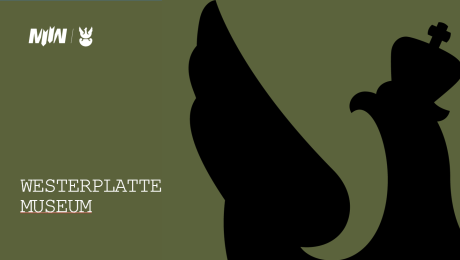Stage I
Duration: October 10th - November 25th, 2016. Area: archaeological research - 160 m²; digging work combined with the search for artifacts under archaeological supervision - 7977 m²; geophysical research - 900 m². Result: confirmation of the location of the Guardhouse No. 5 and the officer's villa remains.
The first stage of archaeological research on the Westerplatte Peninsula took place from October 10th to November 25th, 2016. The primary goal of the work was to confirm the location of the remains of Guardhouse No. 5 and the officer's villa and document their condition in order to develop a concept for their permanent preservation and possible display as part of the revitalization of the "Battle of Westerplatte" historical monument. In addition, soldiers from the 3rd Fleet of Ships, under archaeological supervision, cleared the area of explosives and hazardous military-origin materials to ensure the safety of museum workers and tourists visiting Westerplatte. These activities were accompanied by the search for artifacts.
During this stage, an area of 160 m² was meticulously examined, and sapper and digging work combined with the search for artifacts was conducted over an area of 7977 m². The location of the test pits in the vicinity of the officer's villa and Guardhouse No. 5 was determined based on archival maps and photographs, as well as anomalies identified during geophysical research. The metal detector-guided test pits were dug in places where the discovered items had archaeological significance.
Guardhouse No. 5 was constructed as part of a new fortification system for the Military Transit Depot. Its construction was prompted by the growing threat from the unfriendly authorities of the Free City of Gdańsk and Nazi Germany. The concept involved building scattered guardhouses, forming separate resistance nests whose fire sectors complemented each other. Construction of these facilities began secretly in the autumn of 1933. Guardhouse No. 5, completed in the spring of 1934, was the last of such buildings to be erected. During the German air raid on September 2nd, 1939, it was hit by two SC-50 bombs (weighing 50 kg each), and an additional SC-250 bomb (weighing 250 kg) exploded right next to the building. The force of the detonation tore apart the upper floor of the building, and in its lower part, where most of the soldiers had taken shelter, there was an explosion of ammunition stocks and a fire. At least seven soldiers perished in the guardhouse. After the war, the Germans ordered Polish civilian prisoners of war to recover and bury the bodies and then dismantle the building.
The officer's villa, the second structure under archaeological research, was a remnant of the Westerplatte seaside resort (Ostseebad Westerplatte). The building, known as Villa Sonnenbrodt, was erected at the end of the 19th century. In 1919, it was unofficially purchased by a representative of the Polish government, Mieczysław Jałowiecki, and designated for housing for Polish officials. In 1926, after the Polish takeover of the peninsula, the facility was adapted for the needs of the officer cadre of the Military Transit Depot. In the summer villa, constructed using half-timbered construction, tiled stoves were installed, and necessary renovation work was carried out. During the September attack, the building suffered partial damage. After the Germans occupied Westerplatte, it was demolished to its foundations. Bricks obtained from this demolition were used to expand the Stutthof camp.
The research allowed for the determination of the location and dimensions of the buildings and the acquisition of movable artifacts contextually related to the Depot. The work area was divided into three research areas temporarily named "Guardhouse," "Villa," and "Forest." In the investigations in the "Guardhouse" area, relics of the eastern wall and a portion of the lower floor of Guardhouse No. 5 were uncovered, as well as the concrete foundations of a fence made of monolithic wire mesh (known as the Ledóchowski mesh), which served a function similar to anti-tank barriers and provided effective defense against infantry assault. A crater from a SC-250 aerial bomb that exploded near the northern wall of the building was located, and the damage to the guardhouse resulting from the construction of the cemetery layout in 1989 was documented. In the "Villa" area, the layout of the external walls of the officer's villa was recorded, as well as part of the internal division of the lower floor of the building. Elements added during the adaptation of the building for the needs of the Military Transit Depot were also located: a basement for storing fuel and relics of an extension serving as an entrance from the northern side of the building. During digging work under archaeological supervision in the "Forest" area (located west of the guardhouse and villa), mainly refuse objects related to the resort period were registered, as well as one created during the cleaning of the interior of the officer's villa before its demolition.
During the sapper work, over 130 explosive and hazardous military-origin items from the end of World War II were found and disposed of, including hand grenades, artillery shells (20-150 mm), fuses, Panzerfausts, and small arms ammunition.
During this stage of research, over 4,500 artifacts were obtained, with almost 2,000 of them recognized as objects of significant historical, exhibition, or historical value. Among them are items related to the period of operation and defense of the Military Transit Depot, such as shoulder boards and uniform trims of a Sub-Lieutenant Commander of the Polish Navy, an iron window frame from Guardhouse No. 5 with partially preserved armored glass, WWI military buttons, magazines for Browning wz. 28 submachine guns, an ammunition charger for reloading ammunition in their magazines, and fragments of Polish rifle ammunition bearing traces of the explosion that occurred in Guardhouse No. 5. Two particularly valuable artifacts, also damaged during the explosion, are a deformed and fragment-pierced spoon from a Polish two-part field mess kit wz. 38 and a bent and heat-damaged Polish eagle from a Garrison Cap wz. 1919. Both items likely belonged to soldiers who were inside the guardhouse at the time of its destruction.
As part of the first stage, geophysical research was also conducted on part of plot 25/2, covering an area of 900 m². These surveys were conducted before archaeological work began, and their results were used to outline the test pits.











